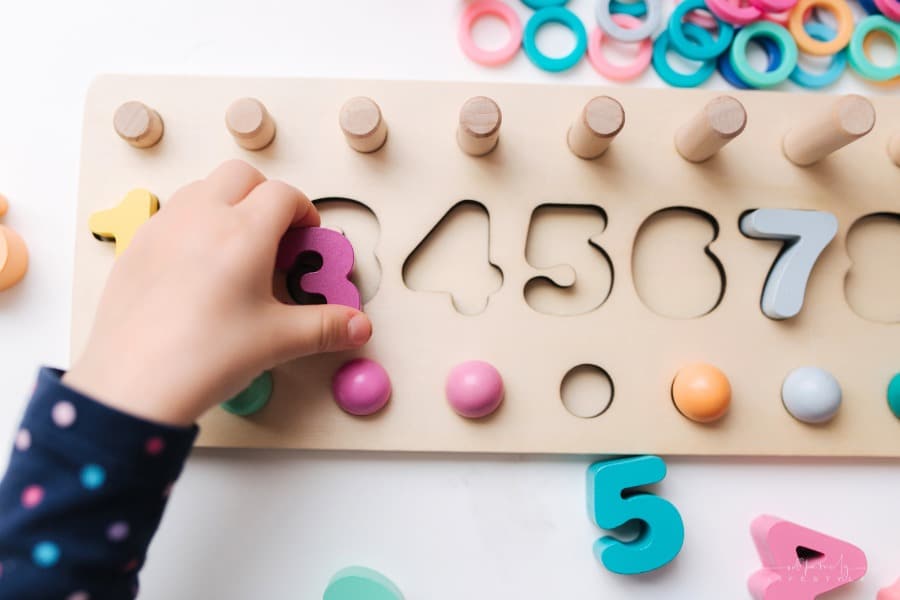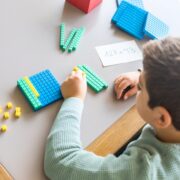Beyond Worksheets: Innovative Approaches to Teaching Math to Young Children
This article explores creative and effective strategies beyond traditional worksheets to engage and inspire young learners in math.
Discover new ways to make math fun, exciting, and meaningful for your child’s early math education journey!
Teaching Math to Young Children
When teaching math to young children, it is crucial to incorporate innovative approaches.
Here are the main points to get your inspiration going:
- Start by creating a lesson plan that includes age-appropriate activities, practice sheets, and real-world problem-solving.
- Incorporate technology when possible to engage students in their learning. For instance, introducing fun online math games can be a great way to make learning more interactive and enjoyable.
- Focus on building basic math skills while helping children understand why math is important.
- Encourage creative thinking and collaboration throughout the lesson and allow students to play a central role in their learning environment.
- Implement assessment strategies to measure student progress and make adjustments when necessary.
Now, let’s get into the details, shall we?

Connect Math to Real World
Connect math to the real world to make it more relatable and engaging for students.
- For example, tutors should use everyday objects to demonstrate counting or incorporate shapes into art projects.
- Also, provide meaningful and contextual learning experiences that tap into children’s curiosity and creativity.
This helps learners develop their math, problem-solving, and critical thinking skills.
Teaching young children to connect math to the real world helps them see its relevance and use it as an important tool for problem-solving.
Help connect math to the real world by giving your students a better understanding of the world around them through available Sen Teacher Jobs Birmingham.
One way to make this connection for students is through practical math activities.
For example, building a simple structure from blocks of various shapes and sizes can help them understand basic geometry and measurements.
Teachers and parents should also explain how math is used in the real world.
Examples could include how architects use geometry when designing buildings or how engineers utilize mathematics when designing machines.
Exploring real-world applications of math can help students understand the importance and relevance of mathematics in our everyday lives.
Another method is to use visual aids, such as pictures and diagrams, to show how math can be used in different contexts.
- For example, showing a diagram of a pizza with the slices labeled by fractions can help students understand fractional parts and how they relate to one another.
- Likewise, showing them how their favorite foods are made or how a recipe uses measurements can help them understand basic math concepts.
- Once you show them real-world examples of how to use fractions, you can start teaching them more complicated formulas. For example, you can move from simple fractions to instructing them on how to compare fractions.
Focus on Hands-on Activities and Games
When learning math, teachers should add fun activities and games.
- Students can do their math puzzles and challenge each other to solve them.
- Parents and teachers can also introduce card or board games related to the concepts they teach in class.
- Include group activities since they are an interactive way to teach math.
- Involve students in math competitions between teams, creating problem-solving challenges, or cooperative activities.
Since math can be intimidating for some students, teachers should provide support to make learning easier.
For example, they can use visual techniques and multiple examples or break down complex problems into smaller steps.
It helps students understand the concepts better and remember them for longer periods.
Both parents and teachers should encourage students to use online resources to practice and learn more.
They should also ensure their students have enough time to practice the concepts they learn in class. Repetition is important to master math concepts.
Don’t forget to celebrate each student’s achievements and encourage them to keep learning. Rewarding students when they accomplish a task or recognizing their efforts motivates them.
Incorporate Technology
Technology creates a dynamic learning environment and makes learning math fun and engaging.
Parents play a crucial role here, as they can encourage kids to engage in interactive games or show videos that explain mathematical concepts as presented during maths online homeschool sessions.
Both parents and teachers can also use websites, apps, or virtual reality to help students explore and apply math concepts.
Technology can serve as a medium for assessment, allowing teachers to assess student performance and identify areas that need more attention.
Technology also enables children to work independently from home or in the classroom.
They can access learning materials and activities anytime and study math at their own pace.
In addition, teachers can assign online quizzes or exercises tailored to each student’s needs and provide real-time feedback.
Finally, encouraging kids to join math forums and share knowledge with others fosters creativity and collaboration.
Make Flashcards
Make flashcards with a math problem on one side and the correct answer on the other. The students can quiz each other on math problems.
Flashcards can also act as assessment tools to identify areas where they need help.
Students can work through the cards at their own pace, which keeps them engaged and fosters learning in an active environment.
Tutors can adapt and reuse flashcards to ensure each student understands the material.
Final Thoughts
In conclusion, incorporating innovative approaches to teaching math to young children can transform their learning experience, whether you’re a parent or a teacher.
By going beyond worksheets and embracing creative strategies, we can foster a love for math, build foundational skills, and empower our children for success in their math education and beyond.
So let’s work together to inspire young minds and make math a joyful and meaningful journey for every child!


